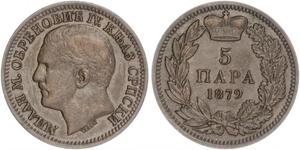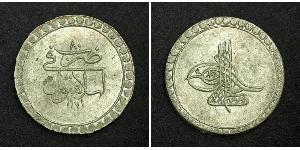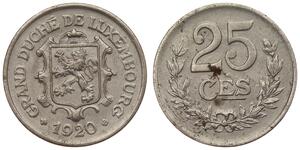1 Para
1808, Libya (Ottoman), Sultan Mahmud II. Copper Para Coin. Top-Pop! PCGS AU-58!
Mint Place: Tripoli
Reference: KM-93.
Denomination: 1 Para
Mint Year: AH 1223 (1808 AD)
Condition: Certified and graded by PCGS as AU-58! - Population 1/0!
Material: Copper
Weight: ca. 4gm
Diameter: 19mm
The coastal region of what is today Libya was ruled by the Ottoman Empire from 1551 to 1912. First, from 1551 to 1864, as the Eyalet of Tripolitania (Ottoman Turkish: ایالت طرابلس غرب Eyālet-i Trâblus Gârb) or Bey and Subjects of Tripoli of Barbary, later, from 1864 to 1912, as the Vilayet of Tripolitania (Ottoman Turkish: ولايت طرابلس غرب Vilâyet-i Trâblus Gârb). It was also known as the Kingdom of Tripoli, even though it was not technically a kingdom, but an Ottoman province ruled by pashas (governors). The Karamanli dynasty ruled the province as a de facto hereditary monarchy from 1711 to 1835, despite remaining under nominal Ottoman rule and suzerainty from Constantinople.
Besides the core territory of Tripolitania, Barca was also considered part of the kingdom of Tripoli, because it was ruled by the Pasha of Tripoli, also the nominal Ottoman governor-general.
Ottoman name of "Trablus Garb" literally means "Tripoli in the West" since the state already had another Tripoli in the east also called Trablus conquered by Selim I after the battle at Marj Dabiq. After Tripolitania was annexed, the names of the eyalets were changed to "Tripoli in Levant" (Trablus Şam) and "Tripoli in the West" which is Roman Tripolitania (Trablus Garb).
A remnant of the centuries of Turkish rule is the presence of a population of Turkish origin, and those of partial Turkish origin – the Kouloughlis.
Mahmud II (Ottoman Turkish: محمود ثانى, romanized: Maḥmûd-u s̠ânî, Turkish: II. Mahmud; 20 July 1785 – 1 July 1839) was the 30th Sultan of the Ottoman Empire from 1808 until his death in 1839.
His reign is recognized for the extensive administrative, military, and fiscal reforms he instituted, which culminated in the Decree of Tanzimat ("reorganization") that was carried out by his sons Abdulmejid I and Abdülaziz. Often described as "Peter the Great of Turkey", Mahmud's reforms included the 1826 abolition of the conservative Janissary corps, which removed a major obstacle to his and his successors' reforms in the Empire. The reforms he instituted were characterized by political and social changes, which would eventually lead to the birth of the modern Turkish Republic.
Notwithstanding his domestic reforms, Mahmud's reign was also marked by nationalist uprisings in Ottoman-ruled Serbia and Greece, leading to a loss of territory for the Empire following the emergence of an independent Greek state.
In terms of the general social structure of the Ottoman Empire, Mahmud's reign was characterized by a major interest in Westernization; institutions, palace order, daily life, clothing, music and many other areas saw radical reform as the Ottoman Empire opened up to the modernization.
其中一个是

-600-300-ZyJnnOFsKAIAAAGL7iMX6YNm.jpg)


-300-150-ZyJnnOFsKAIAAAGL7iMX6YNm.jpg)
 English
English











